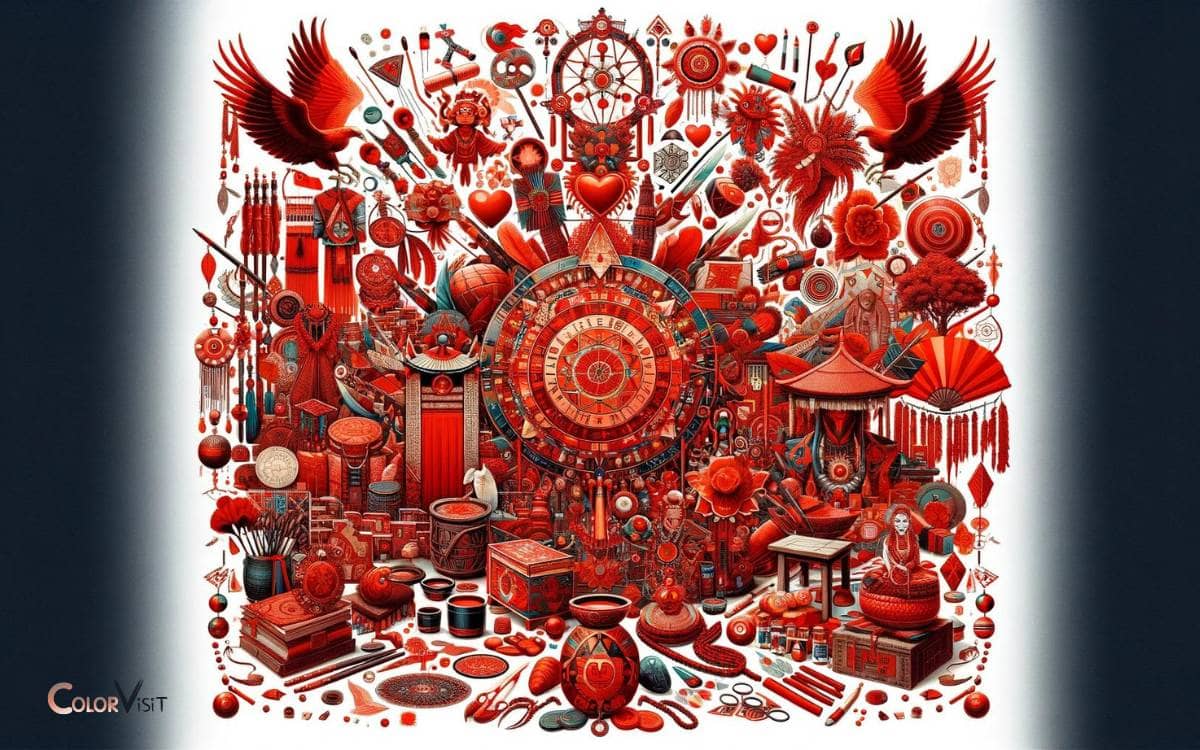Does the Color Red Ward Off Evil? Yes!
Yes, the color red is often considered to ward off evil in many cultures worldwide. This belief is rooted in ancient traditions, psychological influence, and historical practices, making the color red symbolize protection against malevolent forces.
This belief of red warding off evil is not just a random superstition but steeped deeply in cultural, historical, and psychological contexts.
For instance, in Chinese culture, red is associated with luck and prosperity, and it’s often used in festivals and important events to ward off evil spirits.
Similarly, in some African cultures, red is used in rituals and ceremonies for protection against evil.
The psychological impact of the color red also plays a role. Many believe that red, being a vibrant and dominant color, can intimidate and ward off evil forces.
On a more scientific note, some studies suggest that certain colors can indeed influence our mood and behavior, although there’s no concrete evidence to confirm red’s protective power specifically.
Key Takeaway
Cultural Beliefs in Red’s Protective Power
Cultural beliefs in the protective power of the color red have been deeply ingrained in various societies throughout history.
- Traditional beliefs and superstitions have contributed to red’s association with protective symbolism.
- In many cultures, red is considered to ward off evil spirits and bring good fortune.
- This cultural association with protection has led to the use of red in various rituals, ceremonies, and as a decorative element in architecture and clothing.
- The Chinese, for example, hang red decorations during their New Year celebrations to drive away evil forces.
- In India, brides often wear red wedding attire as it is believed to symbolize prosperity and fertility while offering protection from negative influences.
The enduring cultural associations of red as a protective force continue to influence contemporary practices and design choices.
Historical Use of Red in Spiritual Practices
The historical utilization of red in spiritual practices reflects a profound interweaving of symbolism and ritual across diverse societies.
- In ancient Egypt, red ochre was used in rituals to honor the goddess Isis, symbolizing life and vitality.
- In Hinduism, the color red holds symbolic significance, representing desire, passion, and the transformative power of love.
- Across various cultures, red is associated with vitality, strength, and the life force.
- In Chinese traditional medicine, red symbolizes the fire element, representing energy, vitality, and good fortune.
The historical use of red in spiritual practices illustrates the enduring significance of this color in shaping cultural beliefs and rituals.
This deep historical connection sets the stage for understanding the psychological impact of the color red.
Psychological Impact of the Color Red
The psychological impact of the color red is significant and has been the subject of extensive research in various fields including psychology, marketing, and design.
Red’s association with power, passion, and danger triggers a range of emotional and physiological responses, making it a potent tool for influencing human behavior and perception.
In color perception, red is known to elicit strong reactions due to its ability to grab attention and evoke intense feelings.
| Emotional Response | Physical Response | Cultural Significance |
|---|---|---|
| Passion | Increased heart rate | Symbol of luck in some cultures |
| Danger | Elevated blood pressure | Associated with love and romance |
| Excitement | Enhanced metabolism | Sign of prosperity in certain traditions |
These findings have led to the strategic use of red in marketing to create impactful brand identities and in design to influence user experience and behavior.
Scientific Studies on Red’s Influence on Emotions
Numerous scientific studies have investigated the impact of the color red on human emotions, revealing its ability to evoke strong and varied psychological responses.
Researchers in the field of color psychology have found that the color red can elicit intense emotional reactions due to its association with concepts such as passion, danger, and excitement.
Some key findings from these studies include:
- Physiological Arousal: Red has been shown to increase physiological arousal, leading to heightened emotional responses and increased heart rate. This can result in feelings of excitement, vigor, and even aggression.
- Cognitive Performance: Studies have indicated that exposure to red can influence cognitive performance, with individuals demonstrating improved attention to detail and heightened alertness.
Modern Applications of Red for Protection
In modern times, red is utilized for protection in various practical applications and cultural contexts.
- Red clothing is often worn during traditional rituals and ceremonies as a symbol of protection and strength.
- In home decor, red is used to create a sense of security and to ward off negative energy.
- Protective symbols, such as the red string bracelet in Kabbalah, are embraced as modern practices for safeguarding against harm.
- Additionally, modern practices like using red talismans or amulets are gaining popularity as a means of protection in various cultures.
The incorporation of red in these diverse applications reflects the enduring belief in its power to ward off evil and provide a sense of security in the modern world.
Conclusion
The color red has long been associated with protection in various cultural, historical, and psychological contexts.
Scientific studies have also shown its influence on emotions, further supporting its potential as a protective force.
Modern applications of red for protection continue to be explored and utilized. Like a beacon of safety in a storm, the color red’s potential to ward off evil is a fascinating topic that warrants further investigation.






